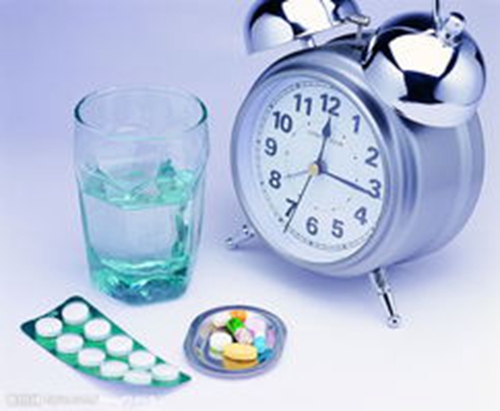Antibiotics clinical application "status map" announced November 23, 2016 Source: Health News The National Health and Family Planning Commission recently published "China's Antibacterial Drug Clinical Application Management and Status of Bacterial Resistance". The data in the book comes from the National Health and Family Planning Commission's Antibacterial Drug Clinical Application Monitoring Network and the National Bacterial Resistance Monitoring Network. The book was released globally at the 9th Global Health Promotion Conference and will be published annually in the future. Drug cost and intensity of use decreased It is understood that the clinical application monitoring network of antibacterial drugs currently has 2,542 network access units, of which 192 are central member units, all of which are top three hospitals. The National Bacterial Resistance Monitoring Network included 1,143 hospitals in the data analysis in 2015, of which secondary hospitals accounted for 23.8% and tertiary hospitals accounted for 76.2%. According to the monitoring, in 2015, the per capita antibiotics expenses of inpatients in the central member units accounted for 10.4% of the per capita total drug costs, a decrease of 0.3 percentage points from 2014. From 2010 to 2015, the per capita antibacterial cost of patients in the non-surgical group of the central member unit decreased from 1135.7 yuan to 444.9 yuan. The per capita antibacterial drug cost of the patients in the operation group decreased from 1554.1 yuan to 642.8 yuan, both of which showed a decreasing trend. According to the monitoring, in 2015, the central member units surveyed a total of 352,516 prescriptions, and the hospital averaged about 2.1 varieties per prescription. The average amount of each prescription and the average amount of prescriptions per antimicrobial drug were lower than in 2014. The accumulated amount of antibiotics consumed by the central member units and the cumulative consumption of antibiotics decreased compared with the growth rate in 2014. From 2010 to 2015, the proportion of antibiotics in total pharmaceutical revenue fell from 19.7% to 11.3%. Surveillance shows that since 2010, the use rate and intensity of antibiotics in hospitalized and outpatients of the central member units have dropped significantly. From 2010 to 2015, the average antibacterial use rate of inpatients decreased from 67.3% to 39.1% in 2015, of which the surgical group decreased from 97.3% to 64.0%; the non-surgical group decreased from 48.5% to 25.6%. The use rate of antibiotics in outpatients decreased from 19.4% to 9.4%. In 2015, the use rate of surgical preventive medication in the central member units was 59.5%. Among them, the type I incision was 45.0%, which was 4.2 percentage points lower than that in 2014; the type II incision was 79.2%, which was 4.7 percentage points lower than that in 2014; the type III incision was 100.0%, which was 3.6 percentage points higher than that in 2014. Since 2010, the intensity of antimicrobial use in hospitals has shown a sharp decline, but in 2014, the decline was small, and in 2015 and 2014 were basically the same. The timing of irrational use of the variety should be improved. It is understood that the selection of varieties is unreasonable, which is one of the main manifestations of the unreasonable use of antibacterial drugs in China. The selection of clinical antibacterial drugs is biased towards broad-spectrum varieties. In 2015, the use of third-generation cephalosporins increased significantly, and it became the most used antibacterial drug. The composition ratio of quinolones also rose from the third place. The indicators of carbapenem antibiotics continue to rise, suggesting that the current clinical dependence on this class of antibiotics. It is worth noting that among the quinolones antibacterial drugs with the second highest intensity ranking, levofloxacin ranked first in the use of antibiotics in all varieties in 2015, and has been ranked among the best in recent years; in quinolones The second-ranked moxifloxacin consumed 3.47% of all antimicrobials, and levofloxacin (8.91%) accounted for 12.38% of all antimicrobials. The use of quinolones, especially levofloxacin and moxifloxacin, should be given sufficient attention. It is unreasonable for the first time to prevent the use of drugs and the combination of drugs, and it is also a prominent problem in the clinical application management of antibacterial drugs. According to the monitoring, the timing of the first preventive medication in the surgical group of the central member unit is gradually becoming more reasonable, but there are still cases in which the patient is not used before surgery, only after the operation, or a few hours or even a few days before entering the operating room. 32.5%. Since 2010, the combination rate of antibiotics in hospitalized patients in the central unit has shown a downward trend, especially in the surgical group, the combined use rate of antibiotics has decreased significantly, from 47.9% in 2010 to 17.8% in 2015, a drop of more than 30. Percentage points. The non-surgical group decreased slightly. The proportion of unreasonable combination of non-surgical group is greater than the proportion of unreasonable combination of surgery group. To Increase Satiety Powder,Increase Satiety,Reduce Hunger,Reduce Appetite Shaanxi Zhongyi Kangjian Biotechnology Co.,Ltd , https://www.zhongyibiology.com
Antibiotics clinical application "status map" announced
Prev Article
Deqing Gonggan